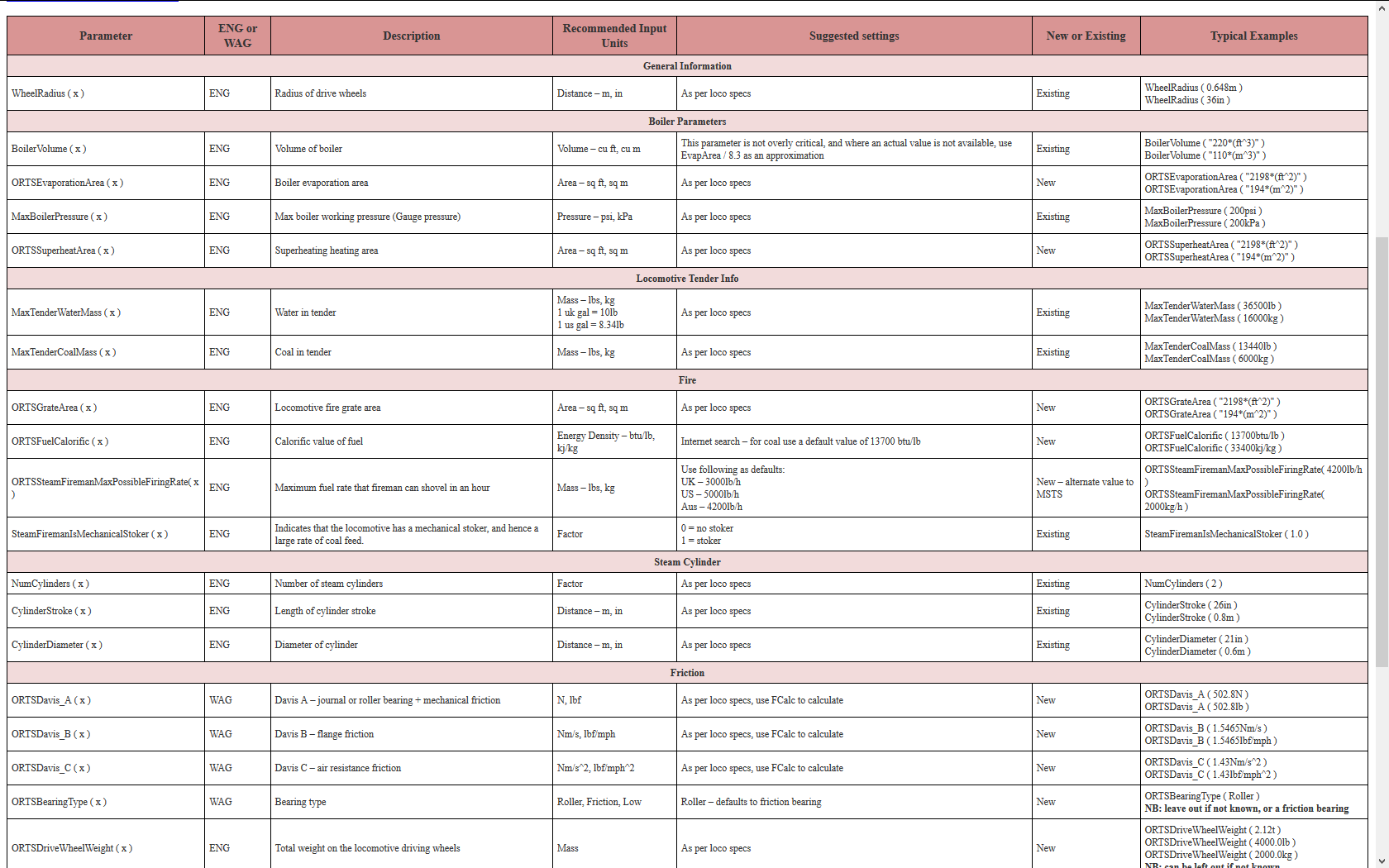Research and Prototypical Data
Index
Typical Prototype Data for Locomotives
Researching the Correct Data
To ensure accurate performance of locomotives (and other rolling stock) it is important to find as much prototypical data as possible, as well as understanding how the locomotive is likely to behave.
This information may be gleaned from a number of locations and put together to establish a view of how the locomotive will 'behave' under different operational conditions.
The accuracy of performance for various pieces of rolling stock within OR very much depends on the correct:
- Identification of enough prototypical data to accurately specify the physics model for the stock and its expected performance
- Formatting and inputting of data into the
ENG andWAG files.
Once this data has been correctly entered into OR it is important to test the performance of the stock to ensure that the actual performance provides a realistic representation of the expected performance. There may be differences in performance of steam locomotives compared to diesel or electric locomotives. Even the performance between the same classes of steam locomotive may vary, and therefore it is recommended that compromises will need to be made and as such, it is recommended that a 'best fit' approach be aimed for.
For best and most realistic operation, it is also important to ensure that rolling stock used in test consists is set to 'standard' parameters. For example the brake operation settings should be consistent and similar in all pieces of stock as this will provide a consistent performance when testing. For this reason a set of standard test wagons has been created, which may be of assistance, or alternatively the tester may make their own set to a standard that they have chosen.
When testing it is also important to try and limit the number of variables (or things that can go wrong) to a smaller number as possible. Thus it is recommended that only one or two items at a time be tested at one time. In the case of a steam locomotive it is recommended that the tender be tested first and then the locomotive as this will limit the number of variables.
If you wish to provide any feedback on this page, please use the contact page. It would be great to have some feedback, as this helps to ensure the accuracy of the information.
Typical Prototype Data for Locomotives
Below is an example of the type of information that you will need to find to specify your steam locomotive correctly. Wikipedia is also a good potential source of information.

Similar information can be found for diesel and electric locomotives.
Units of Measure (UoM)
It is important to understand the units of measure that you are working in, and make sure that they are correctly recorded in the
The key Units of Measure are described on the following web page.
 Standard UoM for ENG and WAG Files (updated Sept 2019)
Standard UoM for ENG and WAG Files (updated Sept 2019)It is highly recommended that a UoM always be included in a parameter, and that it be the same UoM that is used in the source data, as this will allow easy checking and confirmation of the accuracy of the parameters. It will always ensure that no mis-interpretations of data will occur.
Useful Links
Standard Steam Locomotive Specifications - Has most of the standard specifications for steam locomotives, including evaporation and grate areas.
Wikipedia - D50 Class - try searching for the specific class of locomotive to see if the specifications exist on wikipedia.